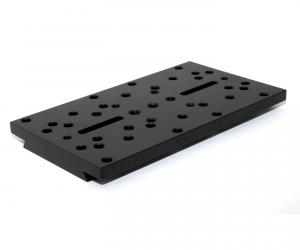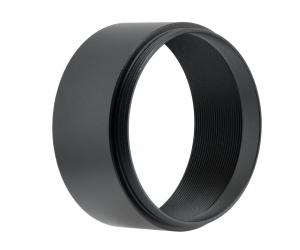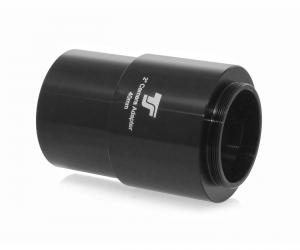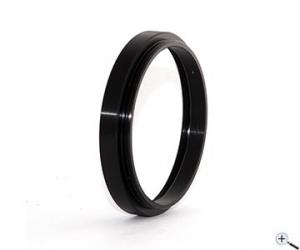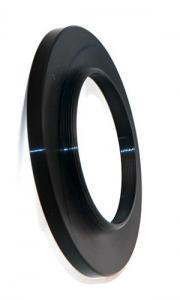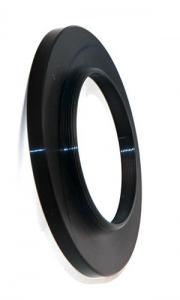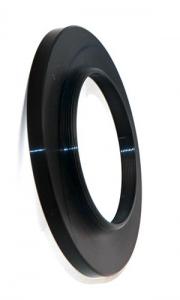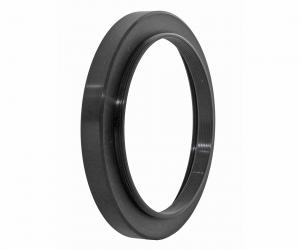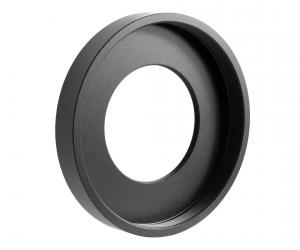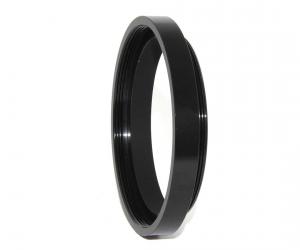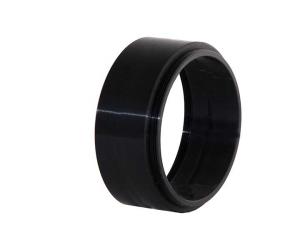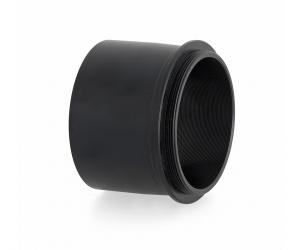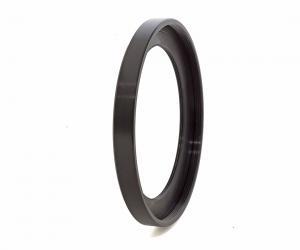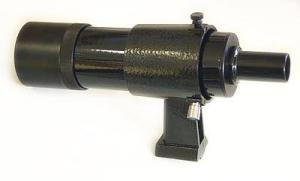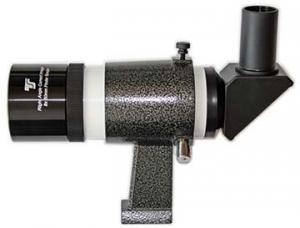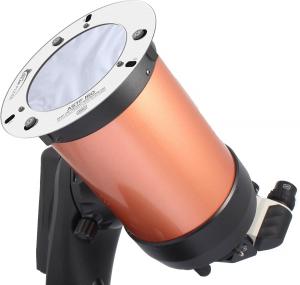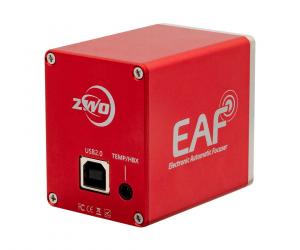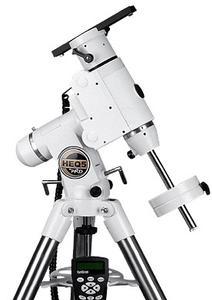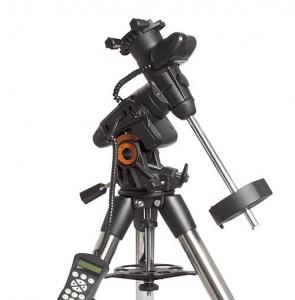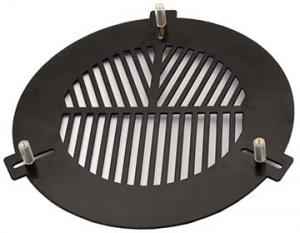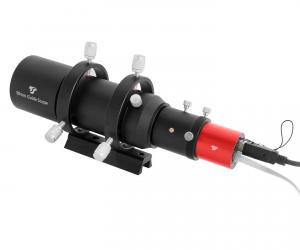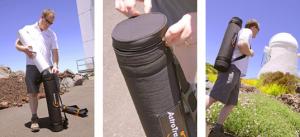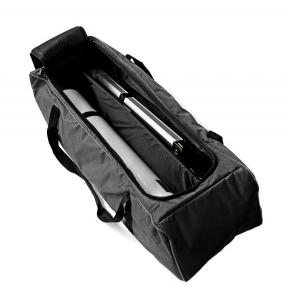- Telescopes
- Overview:
Telescopes - Achromatic Refractor
- Apochromatic Refractor
- Overview:
Apochromatic Refractor - ED Refractor - less color aberration than an achromatic
- SD APO - color free 2-element APO objective
- EDT APO - 3 element ED objective
- High End APO with 3-element APO objective - no color aberation
- Flatfield APO with flat field for Astrophotography
- All Apos and EDs from all manufacturers - large overview
- TS APO and ED from Japan with high quality optics
- Overview:
- Newtonian Telescopes
- Dobsonian Telescopes
- RC Ritchey Chretien Telescopes
- Casssegrain Telescopes
- Reflektor Telescopce with Lens Correcture
- Maksutov Cassegrain Telescopes
- GoTo Telescopes
- Solar Telescopes H-Alpha
- Overview:
- Mounts Tripods Rings Rails Power Supply ...
- Overview:
Mounts Tripods Rings Rails Power Supply ... - Mounts Equatorial with GoTo
- Mounts Equatorial without GoTo
- Mounts Azimutal with GoTo
- Mounts Azimutal without GoTo
- Mounts GoTo - Harmonic Drive
- Travel mounts for astro imaging
- Tripods Piers Polar Wedges
- Mount Control & Electronics
- Dovetail Clamps, Plates and Mount Adapters
- Tube Rings
- Power Supply
- Counterweights Balance Weights
- Mount Accessories - Other
- Overview:
- Telescope Accessories
- Overview:
Telescope Accessories - Eyepieces
- Barlows & Reducer Lenses
- Diagonal Mirrors and Prisms
- Binocular Viewers
- Finder Scopes
- Telescope Collimation and Test
- Cleaning Tools
- Transport and Storage
- Dust protection for Telescopes & Accessories
- Stray Light Protection
- Dewcaps and Heater
- Focusers, Adapters, Motorfocus
- Telescope DIY & Improvement
- Other telescope accessories
- Replacement Parts
- Overview:
- Filters
- Overview:
Filters - Color Filters and Color Filtersets
- Nebular Filters for Visual Observing
- Neutral-Density and Polfilter
- Photo Narrowband Nebular Filters
- Photo Broadband Filters
- Photo Planetary Filters
- Photo R-G-B and IR Cut Filters
- Photo - Filtersets
- Photometric Filters
- Clip Filter for DSLR Cameras
- Filter Wheels and Filterslider
- Solar Filters for white light
- Solarfilter for H-Alpha and Calcium
- Overview:
- Adaptors
- Overview:
Adaptors - Adapter 1,25" and 24,5mm
- Adapter 2"
- Adapter T2 - M42x0.75
- Adapter M48x0,75
- Adapter M54
- Adapter SC
- Adapter M63
- Adapter M68
- Adapter to other Threads
- Adapter Extensions
- Adapter camera bayonet
- Adapter Objective Filterthread
- Adapter Quick Changing , Rotation
- Adapter Eyepiece Projection
- Adapters Tilting
- Overview:
- Astrophotography and Photography
- Overview:
Astrophotography and Photography - Cooled Cameras
- Cameras without Cooling
- Deep-Sky Cameras uncooled
- Set-Offers Camera, Filter, Wheels
- Acessories for Cameras
- Travel mounts for astro imaging
- Imaging Correctors for Telescopes
- Autoguiding Cameras & Sets
- Everything for Guiding
- Focusing aids - Bahtinov mascs
- Flat Field foils and boxes
- Lenses for Cameras
- Piggyback Camera Holder
- Camera Bags, Photocases & more
- Digital Camera and Smartphone Adapter
- Other photo accessories
- Overview:
- Binoculars, Spotting Scopes, Microscopes, Range Finders
- Overview:
Binoculars, Spotting Scopes, Microscopes, Range Finders - Roof Prism Binoculars
- Binoculars with Porro prisms
- Binoculars from 100mm Aperture
- Binoculars with 1,25 inch eyepieces
- TSMX APO Binoculars
- Binoculars for Astronomy
- Binoculars Hiking Bird watching
- Monoculars - Opera Binoculars
- Accessories for Binoculars
- Spotting Scopes
- Range Finders
- Microscopy
- Bags for Phototripods & Binoculars
- Overview:
- Phototripods and Binomounts
- Books, Software
- Overview:
Books, Software - Books for Astronomy Beginners
- Star Charts and Planispheres
- Books about our Solar System
- Observing Tips for Amateurs
- Popular Astronomy Literature
- Teaching material
- Astrophotography books
- Telescopes, Observatories, Construction
- Calendars Yearbooks
- Software, Star Charts
- Books for Microscopers
- Books Nature and Animals
- Nature Photography TimeLapse
- Overview:
- Night Vision, Magnifiers, Weather, Domes & more
- Beginner Astronomy and Gift Ideas
- Second Hand & Special Offers
- New products
Manufacturer: -TS Teleskope
Product number: TSAPO100Q
EUR2299.00new
EUR 2.299,00RRP EUR 2.790,00you save 17.6% (EUR 491,00)
incl. 19 % VAT (DE)
The VAT indicated refers to that applicable in Germany. After logging in, the VAT amount is adjusted to the applicable VAT of the stored delivery country. Therefore, the final price may vary accordingly.
excl. 11.95 € shipping costs (DE)
more details to the shipping costs ...Please log in to calculate shipping costs to your country.
rating: 5.0 of 5TS-Optics Imaging Star 100 mm f/5.8 Quadruplet Apo with field flatener - with optical test1
- Details..
- Technical data..
- In the box..
- Reviews..
- FAQ..
- Download..
- Manufacturer infos..
- Safety informations..
TSQ-100ED Quadruplet Apo with permanently built-in field correction
The 100 mm f/5.8 quadruplet of the TS Imaging Star line is highly appreciated by astrophotographers. The telescope is an interesting alternative to the Takahashi FSQ-106ED. Due to the air-spaced FPL53 objective, the image is free from chromatic aberration and provides outstanding contrast. Through the integrated corrector the field is perfectly flattened. You will get perfect stars in the field right from the beginning, without the exhausting search for correctors and the right distance.Despite the apo was optimized for astrophotography, it will offer very good performance also visually. The stars are pinpoint and are imaged without chromatic correction. The image stays sharp and contrasty up to 300x magnification.
The photographic 4" rack&pinion focuser:
The CNC focuser is optimized for photography and can handle a payload of up to 8 kg. The travel of the drawtube is carried out via rack and pinion. The construction of the focuser is similar to the Starlight Feather Touch and the mechanical stability comes very close to that of the Starlight Feather Touch. In addition to 2" and 1.25" receptacles, an M78x1 thread is also available for screw adaptations. Suitable adapters, e.g. for the M68x1 thread, are of course available.Features and advantages:
A first-class apochromat for astrophotography:
Our goal was achieving imaging quality on the axis AND in the field without compromises, and also without additional flattener or correctors. The corrector has to be built-in permanently and, obviously, in the optimal distance to the objective. This is almost unobtainable by using an optional flattener. Furthermore, the apochromat has to be mechanically solid and easily to adjust. This has been made possible with the flatfield apo.The focuser has to be stable and, in particular, designed for heavy cameras. With the rack and pinion drive, even heavy accessories can be used. Locking is safely achieved by blocking the adjustment unit.
Connection of cameras with a flange focal distance of 55 mm
The easy way is via the 2" connection. With the TSFA240 adapter you get a T2 connector and with the TSVF230 adapter you get an M48 connector for cameras with larger sensors. You can focus without any problems.Many amateurs prefer a screw mount. The apo offers a M82x1 male thread for this. We recommend the following adaption for a comfortable focus position. With the adaption you do not go too early on the M48 thread and avoid shadowing with large sensors.
Astrophotographic results obtained with this telescope on Astrobin
Here you can find some astrophotographs made with this telescope model: Link to AstrobinVisual observation through the apo:
The 100 mm Quadruplet is optimized for astrophotography. However, it will also give very good results for visual observation and allows magnifications up to about 250x with good contrast imaging. The tight focus position only allows the use of 1.25" accessories. For a 2" mirror diagonal the focus distance is too short.This is how we hand over the apo to the amateur:
Every single TSAPO100Q is checked in our technical department before it is put into storage, in order to guarantee a consistently high product quality.The objective of the 100 mm f/5.8 Imaging Star Quadruplet:
 The apochromat uses a classic air-spaced triplet APO objective which is mounted adjustable. The cell is temperature compensated, so even low temperatures will not change the images of the stars. The main glass is FPL53 from Ohara, Japan. All air-to-glass surfaces have the best coating the manufacturer offers.
The apochromat uses a classic air-spaced triplet APO objective which is mounted adjustable. The cell is temperature compensated, so even low temperatures will not change the images of the stars. The main glass is FPL53 from Ohara, Japan. All air-to-glass surfaces have the best coating the manufacturer offers.Optical power on the axis:
 The 100 mm quadruplet has not only an excellently corrected field, it also offers true apo performance on the axis. The images correspond to a magnification of around 250x and show the well defined imaging power and the absence of chromatic error of this objective (at left outside of the focus, at right in focus).
The 100 mm quadruplet has not only an excellently corrected field, it also offers true apo performance on the axis. The images correspond to a magnification of around 250x and show the well defined imaging power and the absence of chromatic error of this objective (at left outside of the focus, at right in focus).Prior to shipping, each 100 mm quadruplet apo is tested in our technical department - thus it is ensured that any optics including yours will eliver maximum performance at the starry sky.
TS Imaging Star 100 mm f/5.8 Quadruplet Flatfield Astrograph - featured product in BBC Sky at Night Magazine
 The TS Imaging Star 100 mm f/5.8 Quadruplet Flatfield Astrograph was tested very well at BBC Sky at Night Magazine (Issue 120, May 2015) and got the 4 star badge for this result.
The TS Imaging Star 100 mm f/5.8 Quadruplet Flatfield Astrograph was tested very well at BBC Sky at Night Magazine (Issue 120, May 2015) and got the 4 star badge for this result.Technical Information
Teleskop-Service has collected a lot of helpful information about refractors and provided it in English as a PDF file: refractors.pdf| Aperture: | 100 mm |
| Focal length: | 580 mm |
| Focal ratio: | f/5.8 |
| Objective: | Air-spaced triplet objective |
| Field corrector: | Single lens field corrector system |
| Corrected and fully illuminated field: | 49 mm |
| Focuser: | Dual-speed 4" CNC rack and pinion focuser with 360° rotation |
| Back Focus from 2" connection: | 102 mm - inner draw tube position |
| Drawtube travel: | 40 mm |
| Clear aperture: | 90 mm with anti-reflex thread |
| Connections on the eyepiece side: | M82x1 male thread and 2" and 1.25" connection |
| Connections on tilter: | M82x1 male/female |
| Distance from M82x1 thread to 2" connection: | 33.5 mm including tilter |
| Fine focusing: | 1/10 speed reduction |
| Maximum photographic load: | 6 kg |
| Tube: | painted ultra black inside - length 490 mm (19.25") with retracted dew shield |
| Dew shield diameter: | 140 mm |
| Weight: | only 5.3 kg (10.8 pounds) |
| Weight of the case: | 3.5 kg (7.7 pounds) |
| Size of the case: | 615 mm x 260 mm x 220 mm |
Astrophotographic results obtained with this telescope on Astrobin
Here you can find some astrophotographs made with this telescope model: Link to AstrobinPhotographic results with the ImagingStar 100 mm f/5.8 Quadruplet Apo:
 IC 1396 with ImagingStar 100 using Moravian G3-11002 full-frame size camera
IC 1396 with ImagingStar 100 using Moravian G3-11002 full-frame size camera M 31 through ImagingStar 100 with SBIG ST 11000 full-frame sensor camera
M 31 through ImagingStar 100 with SBIG ST 11000 full-frame sensor camera Lagoon and Trifid Nebula with Nikon D810A DSLR
Lagoon and Trifid Nebula with Nikon D810A DSLR VDB152 through TS Imaging Star 100 mm Apo - Atik 11000
VDB152 through TS Imaging Star 100 mm Apo - Atik 11000 NGC7000 through TS Imaging Star 100 mm Apo
NGC7000 through TS Imaging Star 100 mm Apo Heart Nebula (IC 1805) with TSQ-100ED Apo
Heart Nebula (IC 1805) with TSQ-100ED Apo Soul Nebula (IC 1848) with TSQ-100ED Apo
Soul Nebula (IC 1848) with TSQ-100ED Apo Elephant´s Trunk Nebula (IC 1396) with TSQ-100ED Apo
Elephant´s Trunk Nebula (IC 1396) with TSQ-100ED ApoIn the meantime, Andreas Tofahrn has completed a special project, called a "normalized Messier catalogue". This can be found, along with an explanation of what that is exactly, on his corresponding webpage.
 Jellyfish Nebula (IC 443)
Jellyfish Nebula (IC 443) Rosetta Nebula (NGC 2237)
Rosetta Nebula (NGC 2237) Elephant´s Trunk Nebula (IC 1396)
Elephant´s Trunk Nebula (IC 1396) Iris Nebula (NGC 7023)
Iris Nebula (NGC 7023) Pinwheel Galaxy (M 101)
Pinwheel Galaxy (M 101) M 81 (Bode´s Galaxy) and M 82 (Cigar Galaxy)
M 81 (Bode´s Galaxy) and M 82 (Cigar Galaxy) Tadpole Nebula (IC 410)
Tadpole Nebula (IC 410) Wolf-Rayet Star 134 (WR 134)
Wolf-Rayet Star 134 (WR 134) Ghost Nebula (IC 63)
Ghost Nebula (IC 63) Lion Nebula (Sh2-132)
Lion Nebula (Sh2-132) Wizard nebula (NGC 7380) with TSQ-100ED Apo
Wizard nebula (NGC 7380) with TSQ-100ED ApoQuestion:
How do I adapt a camera with a large sensor (full frame size format) without vignetting and without clamping?
Answer from Teleskop-Service:
A too early reduction to the M48 thread would cause vignetting in full frame size format. If you don´t want to go over the 2" receptacle and want to screw everything together, we recommend the following adaptation:
This gives you a working distance between 55 mm and 105 mm from the M48 thread onwards, depending on the position of the focuser. So you have enough space for filter holders or off-axis guiders.
Of course, you can also screw the TSVM8230s into each other to further shorten the distance.
| Manufacturer / Importeur: | Teleskop-Service Ransburg GmbH |
| Street: | Von-Myra-Str. 8 |
| ZIP / City: | 85599 Parsdorf |
| Country: | germany |
| Telefon number: | +49 89 99228750 |
| Email: | info@teleskop-service.de |
| Website: | www.teleskop-express.de |
Safety informations: PDF Download
Recommended accessories
Accessories for mounts
Adaptors
TS-Optics Adapter from M82x1 to M48x0.75 2" Filter Thread
EUR 45,00RRP EUR 49,00you save 8.2% (EUR 4,00)
Finder & Accessories
TS-Optics 8x50 Finder - straight view, black colour and with adjustable bracket
EUR 75,00RRP EUR 89,00you save 15.7% (EUR 14,00)
TS-Optics 8x50 Finder - with Bracket - white colour - 90° angled - erect image
EUR 98,00RRP EUR 109,00you save 10.1% (EUR 11,00)
General Accessories
From Exhibition: ZWO EAF Motor Focus System with 5 V USB Supply + Hand Controller and...
EUR 299,00RRP EUR 336,00you save 11% (EUR 37,00)
Mounts
Celestron AVX GoTo Mount for Astronomy and Astrophotography
EUR 1.249,00RRP EUR 1.495,00you save 16.5% (EUR 246,00)
Photo Acessories
TS-Optics Bahtinov Mask for Astrophotography - D= 105 mm to 150 mm
EUR 25,90RRP EUR 31,00you save 16.5% (EUR 5,10)
Similar Products
TS-Optics 86 mm f/7 Quadruplet Flatfield Apo - with optical test
EUR 1.299,00RRP EUR 1.599,00you save 18.8% (EUR 300,00)
Transport & Covers
TS-Optics Padded Transport Bag with internal Divider - length 1000 mm
EUR 89,98RRP EUR 104,00you save 13.5% (EUR 14,02)
Reviews
Written by Horst Mauerer
on 2024-12-22
"Der TS-Optics 100 mm f/5,8 Quadruplet APO überzeugt mich durch seine hervorragende Verarbeitungsqualität. Für die mobile Astrofotografie ist er ideal, da ich kein Newton-Teleskop wollte, das vor jedem Einsatz kollimiert werden muss. Besonders bei Deep-Sky-Objekten liefert der APO für mich beeindruckende Ergebnisse. Das Öffnungsverhältnis von f/5,8 ist für ein APO-Teleskop in dieser Klasse ebenfalls ausgezeichnet. Ich nutze den APO in Kombination mit meiner Vollformat-DSLR und bin mit dessen Leistung durchweg zufrieden. "
Written by Tim Sullivan
on 2017-08-29
"Excellent product. I really love this scope!"


















